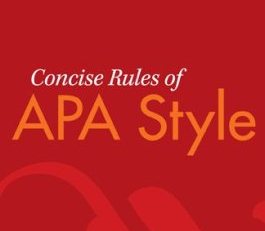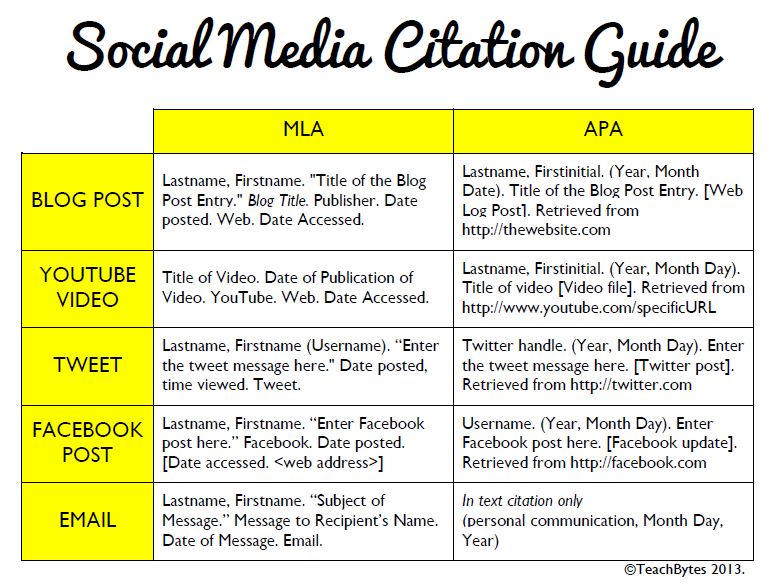Sponsored Links
A Guide in Using APA Format
A Guide in Using APA Format

THE FOLLOWING is a guide in using the American Psychological Association (APA) format. As the APA style is now widely used by various academic fields and institution, students and educators need to have a background on this format now more than ever.
A Guide in Using APA Format: The Basics
The list of works cited should begin at the end of the paper on a new page with the centered title, References. Alphabetize the entries in your list by the author's last name, using the letter-by-letter system (ignore spaces and other punctuation.) Only the initials of the first and middle names are given. If the author's name is unknown, alphabetize by the title, ignoring any A, An, or The.
For dates, spell out the names of months in the text of your paper, but abbreviate them in the list of works cited, except for May, June, and July. Use either the day-month-year style (22 July 1999) or the month-day-year style (July 22, 1999) and be consistent. With the month-day-year style, be sure to add a comma after the year unless another punctuation mark goes there.
Underliningor Italics?
If reports were written on typewriters, the names of publications were underlined because most typewriters had no way to print italics. If you write a bibliography by hand, you should still underline the names of publications. But, if you use a computer, then publication names should be in italics as they are below. Always check with your instructor regarding their preference of using italics or underlining. Our examples use italics.
Hanging Indentation
All APA citations should use hanging indents, that is, the first line of an entry should be flush left, and the second and subsequent lines should be indented 1/2".
Capitalization, Abbreviation, and Punctuation
The APA guidelines specify using sentence-style capitalization for the titles of books or articles, so you should capitalize only the first word of a title and subtitle. The exceptions to this rule would be periodical titles and proper names in a title which should still be capitalized. The periodical title is run in title case, and is followed by the volume number which, with the title, is also italicized.
If there is more than one author, use an ampersand (&) before the name of the last author. If there are more than six authors, list only the first one and use et al. for the rest.
Place the date of publication in parentheses immediately after the name of the author. Place a period after the closing parenthesis. Do not italicize, underline, or put quotes around the titles of shorter works within longer works.
Format Examples
Books
Format:
Author's last name, first initial. (Publication date). Book title. Additional information. City of publication: Publishing company.
Examples:
Allen, T. (1974). Vanishing wildlife of North America. Washington, D.C.: National Geographic Society.
Boorstin, D. (1992). The creators: A history of the heroes of the imagination. New York: Random House.
Nicol, A. M., & Pexman, P. M. (1999). Presenting your findings: A practical guide for creating tables. Washington, DC: American Psychological Association.
Searles, B., & Last, M. (1979). A reader's guide to science fiction. New York: Facts on File, Inc.
Toomer, J. (1988). Cane. Ed. Darwin T. Turner. New York: Norton.
Encyclopedia & Dictionary
Format:
Author's last name, first initial. (Date). Title of Article. Title of Encyclopedia (Volume, pages). City of publication: Publishing company.
Examples:
Bergmann, P. G. (1993). Relativity. In The new encyclopedia britannica (Vol. 26, pp. 501-508). Chicago: Encyclopedia Britannica.
Merriam-Webster's collegiate dictionary(10th ed.). (1993). Springfield, MA: Merriam-Webster.
Pettingill, O. S., Jr. (1980). Falcon and Falconry. World book encyclopedia. (pp. 150-155). Chicago: World Book.
Tobias, R. (1991). Thurber, James. Encyclopedia americana. (p. 600). New York: Scholastic Library Publishing.
Magazine & Newspaper Articles
Format:
Author's last name, first initial. (Publication date). Article title. Periodical title, volume number(issue number if available), inclusive pages.
Note: Do not enclose the title in quotation marks. Put a period after the title. If a periodical includes a volume number, italicize it and then give the page range (in regular type) without "pp." If the periodical does not use volume numbers, as in newspapers, use p. or pp. for page numbers.
Note: Unlike other periodicals, p. or pp. precedes page numbers for a newspaper reference in APA style.
Examples:
Harlow, H. F. (1983). Fundamentals for preparing psychology journal articles. Journal of Comparative and Physiological Psychology, 55, 893-896.
Henry, W. A., III. (1990, April 9). Making the grade in today's schools. Time, 135, 28-31.
Kalette, D. (1986, July 21). California town counts town to big quake. USA Today, 9, p. A1.
Kanfer, S. (1986, July 21). Heard any good books lately? Time, 113, 71-72.
Trillin, C. (1993, February 15). Culture shopping. New Yorker, pp. 48-51.
Website or Webpage
Format:
Online periodical:
Author's name. (Date of publication). Title of article. Title of Periodical, volume number, Retrieved month day, year, from full URL
Online document:
Author's name. (Date of publication). Title of work. Retrieved month day, year, from full URL
Note: When citing Internet sources, refer to the specific website document. If a document is undated, use "n.d." (for no date) immediately after the document title. Break a lengthy URL that goes to another line after a slash or before a period. Continually check your references to online documents. There is no period following a URL.
Note: If you cannot find some of this information, cite what is available.
Examples:
Devitt, T. (2001, August 2). Lightning injures four at music festival. The Why? Files. Retrieved January 23, 2002, from http://whyfiles.org/137lightning/index.html
Dove, R. (1998). Lady freedom among us. The Electronic Text Center. Retrieved June 19, 1998, from Alderman Library, University of Virginia website: http://etext.lib.virginia.edu/subjects/afam.html
 Note: If a document is contained within a large and complex website (such as that for a university or a government agency), identify the host organization and the relevant program or department before giving the URL for the document itself. Precede the URL with a colon.
Note: If a document is contained within a large and complex website (such as that for a university or a government agency), identify the host organization and the relevant program or department before giving the URL for the document itself. Precede the URL with a colon.
Fredrickson, B. L. (2000, March 7). Cultivating positive emotions to optimize health and well-being. Prevention & Treatment, 3, Article 0001a. Retrieved November 20, 2000, from http://journals.apa.org/prevention/volume3/pre0030001a.html
GVU's 8th WWW user survey. (n.d.). Retrieved August 8, 2000, from http://www.cc.gatech.edu/gvu/usersurveys/survey1997-10/
Health Canada. (2002, February). The safety of genetically modified food crops. Retrieved March 22, 2005, from http://www.hc-sc.gc.ca/english/protection/biologics_genetics/gen_mod_foo...
Hilts, P. J. (1999, February 16). In forecasting their emotions, most people flunk out. New York Times. Retrieved November 21, 2000, from http://www.nytimes.com
Refer these to your siblings/children/younger friends:
HOMEPAGE of Free NAT Reviewers by OurHappySchool.com (Online e-Learning Automated Format)
HOMEPAGE of Interesting ARTICLES on Jose Rizal's LOVE Life, Works, and Writings
To see how our MODERN ELearning Reviewers work, please try this 5-item sample:
An Open Letter to School Principals, Teachers, and Parents
TAG: A Guide in Using APA Format





Add new comment